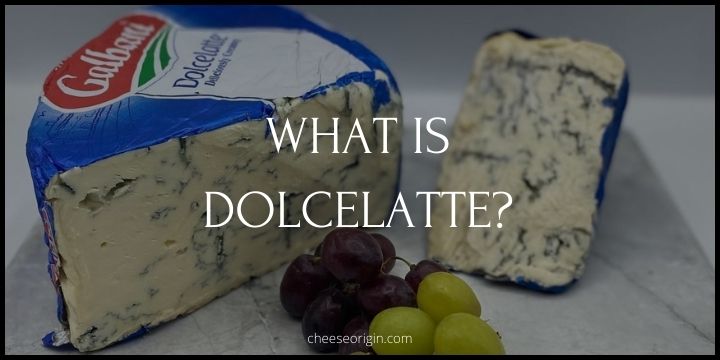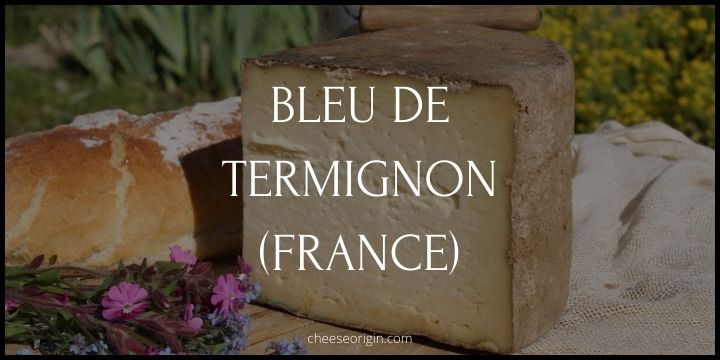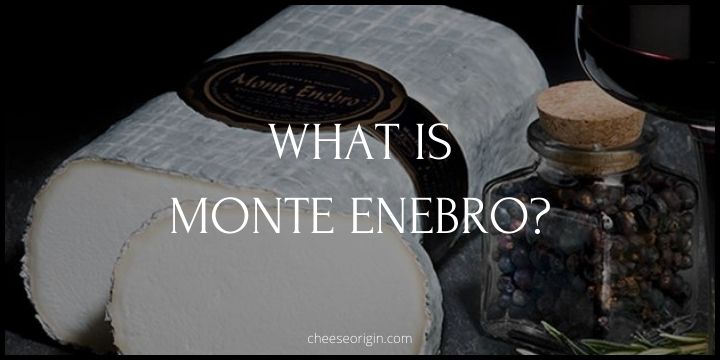What is Dolcelatte? The Sweet Symphony of Italian Cheese

Discover Dolcelatte, Italy’s sweet serenade in the form of cheese. This creamy, blue-veined delicacy is known for its delicate, sweet, and mildly tangy flavor, which sets it apart from the more pungent blue cheeses.
Crafted in the Lombardy region of Northern Italy, Dolcelatte, meaning ‘sweet milk,’ offers a symphony of tastes that make it a favorite among cheese lovers worldwide. Whether spread on a crusty baguette or melted into pasta, Dolcelatte creates a culinary melody that’s hard to forget.
Quick Facts About Dolcelatte
| Quick Facts | Details |
|---|---|
| Origin | Italy |
| Type | Blue cheese |
| Milk | Cow’s milk |
| Texture | Soft, creamy |
| Rind | Natural |
| Color | Pale yellow with blue veins |
| Flavor | Sweet, mild, slightly tangy |
| Aroma | Milky, grassy |
| Fat Content | 50% |
| Ageing Time | 2-4 months |
| Pairings | Fruits, honey, crusty bread, red wine |
| Alternative Names | Dolcelatte di Bufala, Dolcelatte Oro |
| Production Method | Pasteurized |
| Producers | Galbani company |
| Dietary Considerations | Vegetarian-friendly |
| Popular Usage | Salads, pasta, pizzas, cheese boards |
| Shelf Life | 4 weeks when properly stored |
What is Dolcelatte?
Dolcelatte, a name that rolls off the tongue as smoothly as the cheese melts in your mouth, is a fascinating Italian creation. This blue-veined, soft, and creamy cheese, literally translates to ‘sweet milk’ in Italian, and true to its name, it offers a subtly sweet, milky flavor that’s hard to resist.
Born in the 1960s by the Galbani Company, Dolcelatte was designed to be a milder alternative to traditional Italian blue cheeses’ sharp, pungent taste. It’s made from cow’s milk, and its creation process involves a shorter aging time, usually between two to four months, which results in a softer texture and milder flavor compared to its counterparts.
The cheese sports a natural rind, a pale yellow color with characteristic blue veins running through it. The texture is buttery and spreadable, making Dolcelatte a versatile addition to any culinary endeavor. It’s not uncommon to find this cheese gracing salads, pasta, and pizzas or spread on a piece of crusty bread.
But Dolcelatte is not just about taste and texture. It’s an experience, a slice of Italian tradition and craftsmanship. Whether it’s served on a cheese board with fruits and a drizzle of honey or melted into a rich, creamy sauce, Dolcelatte is a testament to Italy’s love for good food. It’s more than just a cheese, it’s a celebration of flavor, a testament to the saying “la vita è dolce” – life is sweet.
What Does Dolcelatte Taste Like?
Dolcelatte is known for its distinctive, yet mild flavor. As the name suggests, Dolcelatte, or ‘sweet milk’ has a mildly sweet taste that is balanced by a subtle tanginess. The cheese is creamy and rich, with a smooth, buttery texture that melts in your mouth.
The blue veins running through the cheese add a hint of spiciness, but it’s much less pungent than traditional blue cheeses. Its flavor profile can also include notes of grass and milk, adding to its overall complexity.
When aged, Dolcelatte develops a deeper, more pronounced flavor, but it always maintains its characteristic sweetness. Its creaminess and mild flavor make Dolcelatte a versatile cheese, perfect for those who are new to blue cheese, but still appreciated by connoisseurs for its unique taste.
Dolcelatte Tasting Notes
- Flavor: Dolcelatte has a mildly sweet and slightly tangy flavor. It is less pungent than traditional blue cheeses.
- Texture: The texture is creamy, soft, and spreadable with a buttery mouthfeel.
- Aroma: Its aroma is reminiscent of fresh milk with subtle grassy undertones.
- Visual: Dolcelatte is pale yellow with distinctive blue veins running through it. It also flaunts a natural rind.
- Taste Complexity: Despite its mildness, Dolcelatte has a complex taste profile, with notes of sweetness, tanginess, and a hint of spice from the blue veins.
- Aging Impact: With aging, the cheese develops a deeper flavor, but it always maintains its characteristic sweetness.
- Pairings: Dolcelatte pairs well with fruits, honey, crusty bread, and red wine. It can also be used in salads, pasta, and pizzas.
- Aftertaste: The aftertaste of Dolcelatte lingers pleasantly, leaving a creamy, sweet impression on the palate.
10 Best Dolcelatte Substitutes
| Substitute | Description |
|---|---|
| Gorgonzola | This Italian blue cheese is creamier and milder than most blue cheeses, making it a good substitute for Dolcelatte. |
| Roquefort | A French blue cheese with a strong, tangy flavor. Use less of it to mimic the milder flavor of Dolcelatte. |
| Danish Blue | This semi-soft cheese shares a similar creaminess and mildness with Dolcelatte. |
| Bleu d’Auvergne | Another French blue cheese that’s creamier and milder, making it a close substitute for Dolcelatte. |
| Cambozola | A German cheese that’s a hybrid between a French soft-ripened triple cream cheese and Italian Gorgonzola. It has a similar sweetness to Dolcelatte. |
| Stilton | An English cheese that’s stronger in flavor but shares the creamy and crumbly texture of Dolcelatte. |
| Fourme d’Ambert | This French blue cheese is milder and less salty, making it a good alternative for Dolcelatte. |
| Bresse Bleu | Known for its creaminess and mild flavor, Bresse Bleu can stand in for Dolcelatte in many recipes. |
| Cashel Blue | An Irish farmhouse blue cheese that offers a unique balance of creamy, tangy, and sweet flavors. |
| Blue Castello | A Danish blue cheese that’s creamy and buttery with a hint of tanginess, similar to Dolcelatte. |
What Pairs Well With Dolcelatte?
| Category | Pairs Well With Dolcelatte |
|---|---|
| Fruits | Grapes, figs, pears, apples |
| Bread | Crusty bread, baguette, whole grain bread, rye bread |
| Wine | Red wine (like Merlot, Cabernet Sauvignon), Port, sweet white wines (like Sauternes, Moscato) |
| Meats | Prosciutto, salami, roast beef |
| Condiments | Honey, balsamic glaze, fig jam |
| Nuts | Walnuts, almonds, hazelnuts |
| Vegetables | Arugula, radicchio, endive |
| Others | Dark chocolate, olives, pasta, pizza |
Also read: What Fruit Goes on a Charcuterie Board?
Also read:
- What is Delice de Bourgogne? The Triple Cream Cheese of Your Dreams
- What is Cabot Clothbound Cheddar? A Collaboration of Craftsmanship
- What is Robiola Bosina? Savor the Soft-Ripened Splendor
- What is Harbison Cheese? The Creamy Delight from Jasper Hill Farm
- What is Tomme de Chevre? A Taste of France’s Goaty Delight
- What is Double Cream Gouda? Holland’s Creamy Treasure
- What is Gortnamona? An Irish Culinary Treasure





